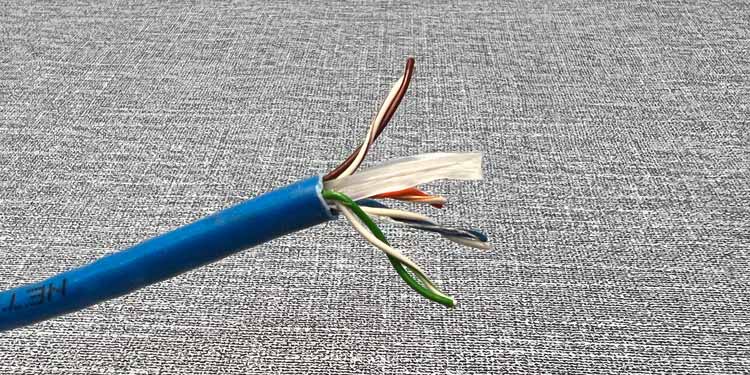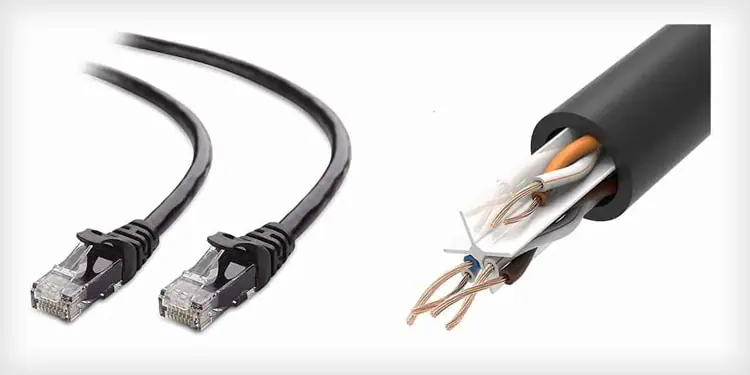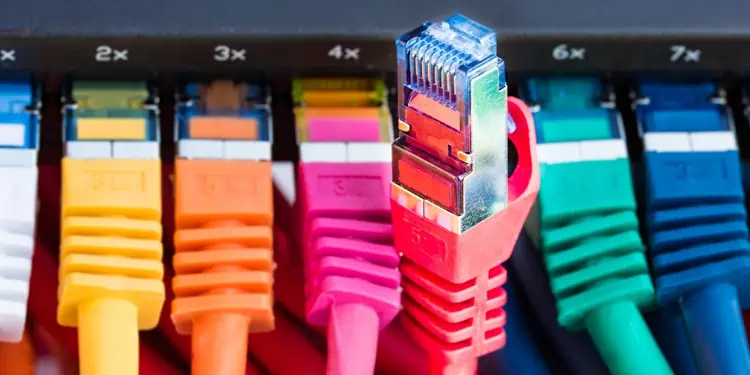CAT5E is currently the most popular type of cable, supporting max bandwidths up to 1000mbps. A decade ago, most people would’ve considered 1Gbps overkill but it’s pretty commonplace now.
CAT6 and CAT6A feel like they’re in a similar spot right now. CAT6 isn’t priced much higher than CAT5E, but it supports up to 10x higher speeds among other improvements. This makes it an attractive option for anyone looking to install Ethernet cables. This is reflected in the real world as well, as CAT6 is increasingly replacing older standards.
CAT6A cables are superior to CAT6 due to their reliable performance over longer distances. But they also have certain disadvantages, such as being harder to install. If you’re confused about which one to go for, we’ll cover the technical differences between the two in this article and help you decide which one is best suited for your specific needs.
Comparison Between CAT6 And CAT6A
Let’s start by understanding how these cable types differ spec-wise.
Bandwidth/Frequency
CAT6 and CAT6A both support 10GBASE-T (IEEE 802.3an-2006), meaning they can support max bandwidths of up to 10 Gbps. But these are hypothetical stats under ideal conditions.
During real-world implementation, factors like Frequency and Cable Length come into play as well. CAT6 cables support up to 250 MHz frequency, while CAT6A is capable of operating at 500 MHz.
The 10GBASE-T standard defines a frequency of 400 MHz for 100-meter connections. As CAT6 operates at 250 MHz max, it can support 10Gbps connections up to 55 m (180 ft) depending on the installation. At longer distances, Ethernet over CAT6 operates at 1000Mbps or a similar bandwidth. CAT6A, on the other hand, can support 10Gbit over the full 100 meters.
Noise Reduction
CAT6 and CAT6A both support higher signal bandwidths compared to their predecessors. This allows for improved specs such as higher max speeds, but it also makes the signal prone to more interference.
CAT6 cables use a separator called a spline to try to physically isolate the four pairs and reduce crosstalk.

In addition to this, CAT6A also employs other measures like shielding to minimize interference from outside noise and preserve signal integrity.
Physical Differences

As the name implies, Category 6 Augmented (CAT6A) cables are physically bigger. CAT6A uses thicker conductors and jackets and has a higher bend radius. It also requires compatible jacks, patch panels, and connectors. All of this makes installing and terminating CAT6A comparatively harder.
Should You Use CAT6
Right now, even CAT5E would be plenty for most of the world. But the thing about installing cables is, it’s a long-term decision. The current installation will last you up to a decade or longer.
Looking at recent history, Gigabit Ethernet and higher standards will likely become the norm in the next few years. When you do subscribe to such high-speed connections, you don’t want your cable to be the limiting factor.
If you want to future-proof your installation, CAT6 is the way to go. It’s an excellent choice for personal use, as well as for small businesses.
When Is CAT6A Better
As stated, CAT6 only supports 10 Gbps up to 55 meters or so, and even that depends on the installation. There are cases where some CAT6 cables are rated to higher frequencies due to manufacturing differences, but those are exceptions.
For longer distance installations where you need the full bandwidth such as campuses, large offices, data centers, etc., CAT6A is the usually better option.
Verdict – CAT6 Vs CAT6A
At present, CAT6 is the cost-effective option that tends to be a better choice in most cases. But CAT6A adoption is increasing too, and soon it may take the place of CAT6 as even newer standards like CAT8 are released.
On that note, you generally shouldn’t get CAT7. It’s not approved by TIA/EIA and doesn’t conform to IEEE standards. It’s often just an overpriced marketing gimmick compared to something like CAT6A.
We’ve also seen some users asking which one would be better for POE devices. There’s no difference in power delivery between the two, so you should make your decision based on other factors, not this one. With all that said, let’s go over the major differences between CAT6 and CAT6A before we conclude:
| CAT6 | CAT6A | |
| Bandwidth | CAT6 can support 10 Gbps connections up to 55 meters. The connection speed will drop to lower rates like 1 Gbps over longer distances. | CAT6A supports 10 Gbps connections up to 100 meters. |
| Frequency | Most CAT6 cables operate at 250 MHz frequency, while some exceptions can support higher frequencies. | CAT6A cables operate at 500 MHz frequency. |
| Cost | CAT6 cables are cheaper. | CAT6A cables tend to be 20-30% more expensive. |
| Ease of Installation | CAT6 cables are easier to install. | CAT6A cables are bulkier and stiffer, which makes them harder to install. |

